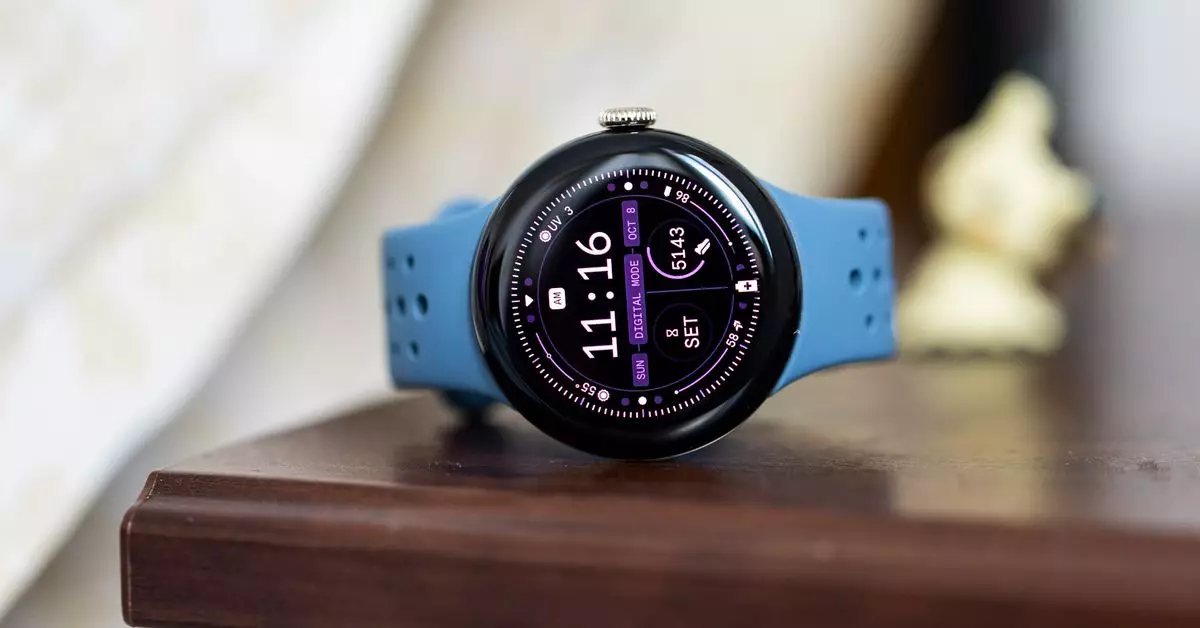In the realm of technology, the evolution of consumer electronics is both rapid and relentless. Devices once considered cutting-edge quickly become outdated as manufacturers introduce new models with improved features and functionalities. One such arena witnessing this trend is smart wearables, where Google’s Pixel Watch series showcases the balancing act of innovation and value. Despite the exciting release of the Pixel Watch 3, many potential buyers may still find that the older Pixel Watch 2 offers remarkable value at a considerably lower cost.
Launched previously, the Pixel Watch 2 is now available at a competitive price point of around $224, marking a $26 discount. For consumers hesitant to invest in the latest technology, this price reduction could signal an excellent opportunity. The Pixel Watch 2 retains a sleek aesthetic, boasting a 41mm size, which appeals to those who prefer a more compact option on their wrist. While some might argue that the device lacks the glamorous features of its successor, it still leverages impressive technology.
Equipped with the Qualcomm Snapdragon Wear W5 Gen 1 chip, the Pixel Watch 2 is far from obsolete. Despite missing out on features like ultra-wideband technology for access to nearby devices, the performance remains comparable to the Pixel Watch 3. Users can expect a seamless experience with the same battery life of about 24 hours when utilizing the always-on display—a feature that many find essential for daily usage.
The Pixel Watch 2’s design, while not as expansive as the Pixel Watch 3’s larger, brighter display, does not detract from its functionality. It sports a display area that is relatively close in size, differing by merely 10 percent. This minor variance is unlikely to greatly affect the overall user experience.
What’s more impressive is that the Pixel Watch 2 is steadily embracing the Wear OS ecosystem. Its continued compatibility means that many exclusive features available to new models, such as enhanced workout tracking, are finding their way into older devices. This inclusivity fosters a sense of longevity for the Pixel Watch 2 among consumers hesitant to upgrade frequently—especially as Wear OS functionalities mature over time.
The latest Pixel Watch 3 certainly brings exciting advancements to the table. With an expanded 44mm size, a brighter display, and added AI-driven features like personalized workout recommendations, it presents a compelling upgrade for users committed to maximizing their smartwatch experience. The ability to utilize offline Google Maps is another notable enhancement that could draw potential buyers. Yet, with a starting price point of $350, the premium comes with a question: are these features worth the investment?
That decision rests heavily on individual priorities. For ardent fitness enthusiasts or those who continuously seek cutting-edge technology, the Pixel Watch 3 may be a justified purchase. However, for casual users who depend mainly on core smartwatch functionalities, the Pixel Watch 2 offers a solid, budget-friendly alternative. By focusing on the essential functions—health tracking, notifications, and overall usability—the older model suits the needs of many consumers just as well as its more advanced counterpart.
Ultimately, consumers must weigh the benefit of new features against their specific needs. The Pixel Watch 2 demonstrates that a more affordable option doesn’t necessitate sacrificing quality or performance. As prices for technologies shift frequently—expedited by events like Amazon’s price-slashing sales—it becomes essential to recognize the true value each device holds amidst the market’s constant evolution.
While the Pixel Watch 3 shines with its enhanced capabilities, the Pixel Watch 2 remains a smart buy, offering users performance that aligns seamlessly with practical daily use. As the world continues to embrace wearable technology, understanding these options aids consumers in making informed decisions that fit their lifestyles without overspending. The true essence of technology lies in its ability to serve our needs—whether through the latest innovation or a proven former model.

